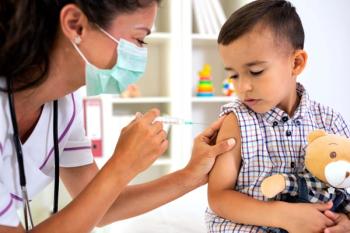
Patients on Biologics for Severe Asthma Show Reduced Response to SARS-CoV-2 Vaccination
Martin Runnström, MD, a fourth-year fellow at the Emory University School of Medicine, describes a study he presented at CHEST 2022 showing a reduced response to a 2-dose immunization series for SARS-CoV-2 among patients using biologics to treat severe asthma or atopic dermatitis.
Martin Runnström, MD, a fourth-year pulmonary and critical care fellow at the Emory University School of Medicine, describes a
Transcript
Why did you do this study examining the effect of biologics for severe asthma on the immune response to SARS-CoV-2 vaccination?
Patients with severe asthma or atopic dermatitis that are on these biologic treatments—in addition to blocking certain cytokines that are important for asthma or atopic dermatitis disease pathogenesis, these same cytokines also have normal roles in normal immunity when it comes to infection or vaccination. So, for example, some of the targets, like interleukin 4, are not only implicated in these diseases, but also they're important for B-cell differentiation and for affinity maturation. And for example, interleukin 5, that is a different target by a different medication, is important for plasma cell generation and maintenance. And ultimately, all of these factors are important for antibody production and disease protection. So that's why we wanted to study these patients on these medications.
How did you do the study?
The way that we did this study was that we screened patients in our Emory University severe
The way that we did this study is that we collected their blood samples, we collected serum or plasma and then cells. And the way that we did the pseudovirus neutralization assay is that pseudovirus neutralization assay is essentially, instead of looking at just the number of antibodies, so an antibody level or an antibody titer, for this study, we wanted to actually look at the function of these antibodies, because some of the important implications of potentially blocking these interleukins is potentially having less efficient antibodies, so to speak.
So, a pseudovirus is essentially a chimeric virus that is a nonpathogenic, nonreplicating virus, so it's much safer to study compared to studying the actual SARS-CoV-2 virus. But you have this spike protein from SARS-CoV-2 on its surface. So what that means is that the pseudovirus can then infect cells that have the [angiotensin-converting enzyme 2] ACE2 receptor, which is the target for SARS-CoV-2.
So, what you do is that you have these pseudoviruses that you then incubate with different dilution of human serum or plasma. And then after that, you add a cell that has the ACE2 receptor. So if there are no antibodies around, the pseudovirus can freely infect the cells, and what that leads to is expression of luciferase that emits light that can then be measured and analyzed.
If there is antibody present in the serum or plasma that you've added, then the spike protein on the pseudovirus is going to be blocked. So there is not going to be any infection, there is not going to be any luciferase expression, and no light admission.
So essentially, using different dilutions, you've calculated dose response curve, and from there, calculate a value at which point 50% neutralization was attained. Using that, we can look at our multiple different time points and comparing our different groups.
Were there any differences by the type of the 3 biologics that were studied?
Good question, and it's something that we did look at. We overall found no difference in between the different groups. So one of the comparisons that I'm going to show during the during the presentation does actually look at that. And, and for the most part, there is at least a nonsignificant trend toward lower neutralization for each one of these medications. But depending, since we are at that point separating the groups into 3 different groups, we lose some power. So only 1 of the groups, for example, is statistically significant, once you've done that comparison.
Newsletter
Stay ahead of policy, cost, and value—subscribe to AJMC for expert insights at the intersection of clinical care and health economics.













































